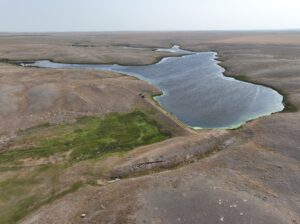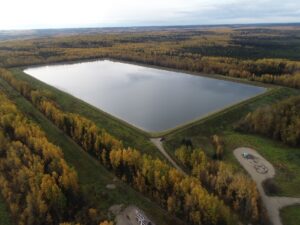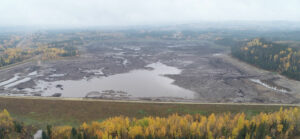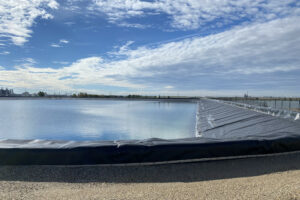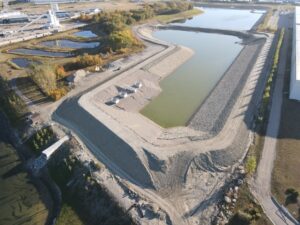Dam Safety Management
In December 2018, the Government of Alberta made significant changes to the Water (Ministerial) Regulation and released a new Alberta Dam and Canal Safety Directive (the Directive). This new Directive introduced substantial changes for existing water storage structures in Alberta. A dam is now defined as “a barrier constructed for retention, storing, or diverting water including water containing another substance, fluid waste, or flowable tailings and includes all other works associated with such a barrier”. In this context, everything that holds water is a dam and all dams require a consequence classification completed by a qualified professional.
The regulation of construction, operation, maintenance, and decommissioning of dams in Canada is a provincial/territorial responsibility. Within the Province of Alberta, legislation falls under 3 key documents:
- Water Act – Alberta Regulation
- Water (Ministerial) Regulation which holds the Alberta Dam and Canal Safety Directive
- Ministerial Orders
- Initial notification to Alberta Environment and Parks (AEP) which includes Engineer-of-Record as well as feasibility design
- Detailed Design Information
- Construction Information
- Construction Documents
- Operations Requirements
The regulatory requirements for a classified dam include:
All structures that create barriers to retain, store, or divert water are dams, but the consequence classification will spell out how much of the new Directive will apply to the dam structure.
For instance, dams with more than 30,000 m3 of live storage (defined by storage above original ground) or have berms higher than 2.5 meters are subject to new design and operating standards within the new Directive.
If the dam structure at failure has no risk to human life, minimum short-term loss and no long-term loss to the environment, and poses low economic losses to the area, it will be classified as a low consequence dam and avoid much of the new Directive requirements.
However, if you have a dam that has a consequence classification of Significant or higher, it will be subject to the new design and operation standards contained in the Directive.
The impacts are determined case by case and will greatly depend on the consequence classification, but some of the impacts may include:
- Owners must have an “Operations Manager” with 10 years of related experience, and a “Safety Manager” with 15 years of related experience
- May require annual engineering inspections
- Annual performance reviews completed by the Designer-of-Record
- There must be an Engineer of Record with 15 years of dam or canal experience
If it is a new purposed dam there are very prescriptive and detailed requirements for site investigations, construction completion reporting and operating requirements. If you have an existing dam structure the first step is completing the consequence classification and understanding what parts of the Directive will have impacts. If you are looking at building a new structure, look hard at how to build the dam designing below the threshold of a low consequence classification.
Have you struggled to weed through complex regulatory changes and understand a clear path forward?
Journey can do an initial desktop review that may include reviewing existing design/construction information, photos, or topographical information. If required, we can visit the site in question and review the structure or complete a consequence classification and prescribe further requirements.
We have also helped clients avoid some of the more onerous requirements by getting involved early with planning and scouting potential locations that will allow for a design that will meet their storage requirements, and also provide a dam design that will not exceed thresholds to higher consequence classifications.
We can support you in:
- Consequence Classification
- Annual Performance Report (APR)
- Dam Safety Management Plan (DSMP)
- Desktop reviews and site visits
- Achieving regulatory compliance
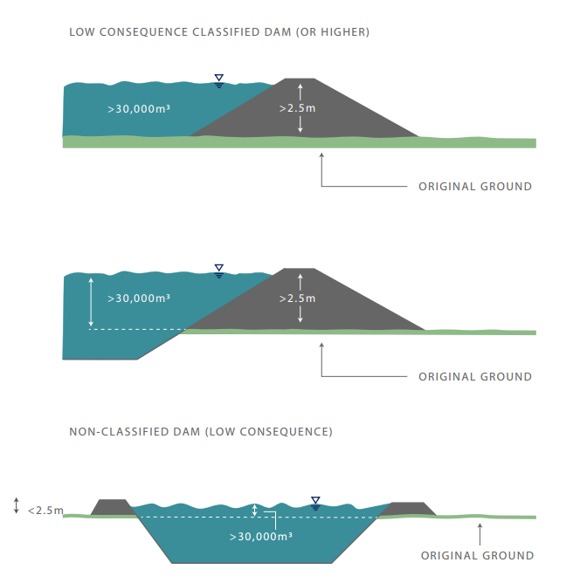
2023 Dam Safety Program
Our client Ducks Unlimited Canada (DUC) has a mission to ensure our wetlands and their associated ecosystems can support future generations. As part of their work in habitat conservation, DUC operates hundreds …
Read More2023 Dam Safety Program for Simonette Water Reservoir
Our client inherited the Simonette Water Reservoir as part of their Simonette asset acquisition. This above-ground pond stores fresh water for industrial processes. A portion of the perimeter berms containing the reservoir …
Read MoreDam Cessation Project
Canadian Natural Resources Limit. put in cessation one of their long-time freshwater reservoirs located in the Swan Hills, AB area. The asset was once required for the successful development of the Swan …
Read MoreDam Safety Management
After changes in dam safety regulations in 2018, including the Alberta Dam and Canal Safety Directive, many brine pond berms that had not previously been considered dams became subject to regulatory dam …
Read MoreDam Safety Management Program for Pond 5A
The High Plains Industrial Park (HPIP) located in Balzac, Alberta, consists of more than 1,300 acres of industrial land and is home to various regional distribution centers. Pond 5A is a large, …
Read MoreServices for Dam Safety
We understand that the requirements for dam safety can sometimes be onerous to fulfil, often requiring input by specialized professionals to meet the regulatory demands for high consequence dams. In addition to …
Read More
